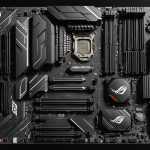Mastering the Maze: Key Obstacles in Developing Cross-Platform Multiplayer Games
Understanding the Importance of Cross-Platform Gaming
In the modern gaming landscape, the ability to play games across various platforms is no longer a luxury, but a necessity. With the diverse array of devices available, from mobile phones and tablets to PCs and consoles, gamers expect a seamless experience regardless of the device they choose. This demand is backed by statistics: over 50% of users prefer games that offer cross-device compatibility, and games with cross-device play can see a retention increase of up to 30%[1].
Cross-platform gaming not only expands the player base but also enhances user engagement. When players can interact with friends across different devices, it strengthens community bonds and encourages longer gaming sessions. However, achieving this cohesive experience is fraught with challenges that developers must navigate.
Topic to read : Mastering Genuine NPC Engagement: Key Techniques for Enriching Sandbox Game Interactions
Defining Cross-Platform Game Development Approaches
Developing games that function seamlessly across multiple platforms requires careful strategy and a deep understanding of the technical and user experience aspects involved.
Native Development
Native development involves building separate applications for each platform. While this approach allows for optimal performance, it is resource-intensive and can be costly. Each platform requires its own set of code, which can lead to duplicated effort and higher maintenance costs.
Have you seen this : Transforming Gaming Transactions: How Blockchain Technology is Shaping the Future of Security in the Gaming Industry
Cross-Compiling
Cross-compiling involves writing code in one language and then translating it for different platforms. This method offers some efficiency but can introduce complexities, especially when dealing with platform-specific features and optimizations.
Hybrid Frameworks
Hybrid frameworks combine web technologies with native elements, providing flexibility and quicker updates. This approach allows for a broader reach, although it might compromise performance. Frameworks like Unity and Unreal Engine are popular choices for hybrid development due to their built-in features and optimizations for cross-platform development[2].
Key Challenges Faced in Cross-Platform Game Development
Developing cross-platform multiplayer games is a complex endeavor, filled with technical, design, and user experience challenges.
Technical Obstacles: Performance and Compatibility Issues
One of the most significant challenges is ensuring smooth functionality across different systems. Mobile devices and desktop computers have different processing powers, memory capacities, and operating systems, which complicates design choices. For instance, high-end smartphones can outperform budget models, leading to a subpar experience for some users. Nearly 43% of mobile users abandon an application if it takes longer than three seconds to load[1].
Performance Nuances:
- Latency: Even a few milliseconds of delay can frustrate players.
- Compatibility: Frameworks and libraries often function differently on various systems, and hardware variations can affect graphics and animation rendering.
- Testing: Extensive testing is necessary to achieve consistency in performance across different devices.
Design and User Experience Challenges
Designing for different screen sizes and resolutions is another critical challenge. With the rise of mobile gaming, developers must create games that scale seamlessly across a wide range of devices, from smartphones to tablets. This requires careful consideration of UI/UX design and optimization techniques to ensure the game looks and plays well on any screen size[2].
Social Features and Community Building:
- Intuitive Interface: Developing an intuitive interface that facilitates social interactions is crucial but often overlooked.
- Compliance with App Store Regulations: Adhering to various app store regulations can restrict creative potential and lead to delays and increased development costs.
Network Architecture and Real-Time Interactions
Multiplayer games introduce a dynamic layer of interaction, requiring robust network architecture and real-time data synchronization.
Client-Server Model vs. Peer-to-Peer Architecture
Client-Server Model:
- Pros: High reliability, improved cheat prevention, consistent game state.
- Cons: Higher operational costs, potential server overload[3].
Peer-to-Peer (P2P) Architecture:
- Pros: Reduced server costs, easier implementation for smaller games.
- Cons: Vulnerability to cheating, desynchronization, and connection instability[3].
The choice of architecture depends on the game’s scale and purpose. For large-scale multiplayer games, the client-server model is generally preferred due to its reliability and security.
Latency and Lag Compensation
Latency is a critical issue in real-time multiplayer games. Developers must prioritize essential data for synchronization while minimizing unnecessary updates to conserve bandwidth.
Strategies for Reducing Latency:
- Optimize Network Code: Use efficient algorithms to reduce data transmission times.
- Use Predictive Models: Predict player movements to compensate for latency.
- Client-Side Prediction: Allow clients to predict outcomes and correct them when server data arrives[3].
Security and Anti-Cheat Systems
Crossplay introduces new security challenges, including cheating methods such as aimbots, wallhacks, and packet manipulation.
Security Measures:
- Advanced Reporting Tools: Enable players to report toxic behavior and breaches swiftly.
- Enhanced Account Protection: Implement multi-factor authentication and robust account security measures.
- Continuous Monitoring: Regularly update and adapt security systems to address new threats[4].
Testing and Iteration
Testing is essential in game development to identify and address issues across different platforms.
Types of Testing:
- Alpha Testing: Identify bugs in early development.
- Beta Testing: Gather feedback from real players.
- Load Testing: Evaluate server capacity under high player counts[3].
Practical Insights and Actionable Advice
To navigate the maze of cross-platform game development, here are some practical tips:
Use Cross-Platform Game Engines
Engines like Unity and Unreal Engine provide built-in features and optimizations for cross-platform development, making it easier to create games that run smoothly on any device[2].
Optimize Game Assets
Reduce the file sizes of assets and use compression techniques to improve loading times and performance on different platforms[2].
Implement Social Features
Integrate social features to allow players from different platforms to interact, share scores, and add friends. This enhances the user experience and encourages longer gaming sessions[5].
Develop Internal Tools
Automate repetitive tasks using internal tools to focus on more critical aspects of game development[5].: Navigating the Complexities
Developing cross-platform multiplayer games is a multifaceted process that demands technical expertise, creative vision, and meticulous planning. By understanding the key challenges, choosing the right development approaches, and implementing best practices, developers can create games that deliver seamless and engaging experiences across various platforms.
Here is a detailed bullet point list summarizing the key challenges and strategies:
- Technical Obstacles:
- Ensure smooth functionality across different systems.
- Address performance and compatibility issues.
- Optimize for latency and lag compensation.
- Design and User Experience:
- Design for different screen sizes and resolutions.
- Develop intuitive interfaces for social interactions.
- Comply with app store regulations.
- Network Architecture:
- Choose between client-server and peer-to-peer models.
- Prioritize essential data for synchronization.
- Security:
- Implement advanced reporting tools and enhanced account protection.
- Continuously monitor and adapt security systems.
- Testing:
- Conduct alpha, beta, and load testing.
- Gather feedback from players to optimize the game.
By mastering these aspects, game developers can navigate the complexities of cross-platform game development and create immersive, engaging, and secure gaming experiences for players worldwide.
Table: Comparing Cross-Platform Development Approaches
| Development Approach | Description | Pros | Cons |
|---|---|---|---|
| Native Development | Separate applications for each platform | Optimal performance | Resource-intensive, high maintenance costs |
| Cross-Compiling | Write code in one language, translate for different platforms | Some efficiency | Complexities, platform-specific issues |
| Hybrid Frameworks | Combine web technologies with native elements | Flexibility, quicker updates | Potential performance compromise |
Quotes from Industry Experts
- “Creating a digital experience that resonates across multiple devices is no small feat. The interplay of various technologies often leads to unexpected hurdles.” – [Moldstud Article][1]
- “Developing a multiplayer game involves integrating several components that work harmoniously to deliver a seamless experience.” – [Techloot Article][3]
- “Crossplay isn’t just altering gameplay—it’s transforming the social fabric of gaming.” – [Qhubo Article][4]
By understanding these challenges and strategies, developers can better navigate the maze of cross-platform game development, ensuring that their games provide a unified, engaging, and secure experience for players across all platforms.







